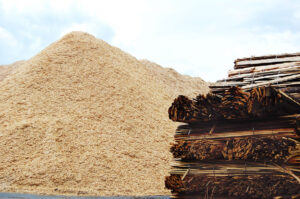Over 97% of UK waste wood processed in 2023, says WRA

The data indicates that while total UK waste wood arisings remained constant last year at approximately 4.5 million tonnes, the amount processed edged upwards from 4.312 million tonnes in 2022 to 4.408 million tonnes (equivalent to 97.9% of total arisings).
This continues the year-on-year pattern of growth since the market was temporarily disrupted by covid in 2020, with well-established markets for all waste wood.
The data is produced by the WRA using the results of its annual survey of members which are extrapolated and combined with other data sets, to produce total UK figures.
WRA members accounted for 3.92 million tonnes of waste wood processed – representing approximately 90% of the market.
Large-scale biomass continued to be the largest user of waste wood in 2023, accounting for 63% of wood processed (2.8 million tonnes). This is up 2.6% from 2022 and demonstrates the important role that waste wood biomass plays in delivering secure, low-carbon, baseload power.
Panel board remained the second largest user of waste wood, accounting for 22% (963,000 tonnes) of wood processed. The represents a slight (5%) decrease compared to 2022, due to a depressed housing market which saw overall production reduce alongside the closure of the West Fraser South Molton manufacturing plant.
Animal bedding, equine surfacing, other recycling and reuse increased during the year to 350,000 tonnes, representing 8% of wood processed. This was up 9% year-on-year as the animal bedding sector recovered from the impact of avian flu in 2022.
Pallet refurbishment and reuse of wooden items through local authority reuse hubs also increased and is something the WRA is hoping to be able to report on in the future.
Julia Turner, executive director of the WRA, said: “We are delighted to report another record year for waste wood processing which shows that supply and demand is now well balanced and we have well developed markets for all waste wood.
“We are particularly pleased to see a healthy increase in wood being sent for animal bedding, equine surfacing, other recycling and reuse and hope this will increase even further in future if we are able to include all the wood sent to reuse hubs and pallet reuse.
“The waste wood market is well positioned for 2024 with environmentally compliant markets for all domestic waste wood arisings. We are confident that as demand reaches full capacity, the remainder of unprocessed wood will find its way into formal rather than informal markets, providing the best environmental outcome for this valuable resource.”

























